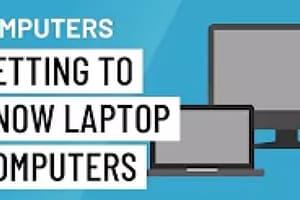Podcast
Questions and Answers
What are the main components of a desktop computer?
What are the main components of a desktop computer?
Processing unit, storage unit, visual display, audio output unit, keyboard, and mouse.
What is the function of the Input Unit?
What is the function of the Input Unit?
To accept digital information from the user using input devices like keyboard and mouse.
What types of memory devices form a memory unit?
What types of memory devices form a memory unit?
Primary storage memory device and secondary storage memory device.
What does the Arithmetic and Logic Unit (ALU) do?
What does the Arithmetic and Logic Unit (ALU) do?
What is the role of the Control Unit in the CPU?
What is the role of the Control Unit in the CPU?
What is the function of the Program Counter (PC)?
What is the function of the Program Counter (PC)?
The Memory Address Register (MAR) holds the data to be transferred.
The Memory Address Register (MAR) holds the data to be transferred.
What type of memory is used for temporary storage of data in the CPU?
What type of memory is used for temporary storage of data in the CPU?
The ___ is considered the brain of the computer system.
The ___ is considered the brain of the computer system.
Match the following CPU register names with their functions:
Match the following CPU register names with their functions:
Flashcards are hidden until you start studying
Study Notes
Structure of Desktop Computers
- Desktop computers typically found on home or office desks consist of five key units: processing unit, storage unit, input units (keyboard, mouse), output units (visual display, audio), and control unit.
- Input Unit: Accepts digital information via devices like keyboards, mice, and microphones. Information can be stored in memory or used immediately for operations.
- Memory Unit: Composed of primary (main) memory and secondary storage. Primary memory is fast but has limited capacity; secondary storage (magnetic tapes, disks) is slower but holds larger amounts of data.
- Arithmetic and Logic Unit (ALU): Performs arithmetic (addition, subtraction, multiplication, division) and logical operations (AND, OR, NOT).
- Output Unit: Delivers processed results through devices such as video monitors, printers, and plotters, with monitors providing visual output and printers producing hard copies.
- Control Unit: Coordinates activities among units, fetching instructions from memory, identifying operations, and generating control signals for execution.
Central Processing Unit (CPU)
- The CPU acts as the brain of the computer, supervising all system operations, interpreting instructions, and controlling device interactions.
- It temporarily stores data and instructions during processing in its memory unit and sends results to the output unit.
- Components of CPU:
- Arithmetic and Logic Unit (ALU)
- Control Unit
- Memory (CPU registers)
General Register Organization
- Registers: High-speed temporary storage for data, addresses, and instructions, accessed directly without addresses.
- Special Purpose Registers:
- Program Counter (PC): Stores address of the next instruction to execute.
- Instruction Register (IR): Holds the currently executing instruction; contents assist in generating control signals.
- Memory Address Register (MAR): Holds the address for data transfer between main memory and processor.
- Memory Data Register (MDR): Contains data to read from or write to a specific main memory location, also known as Memory Buffer Register (MBR).
- Accumulator (AC): Stores results produced by the ALU during operations.
- General Purpose Registers: Hold operands for arithmetic and logic operations and store operation results, known for their low access time and frequent data usage.
Studying That Suits You
Use AI to generate personalized quizzes and flashcards to suit your learning preferences.




